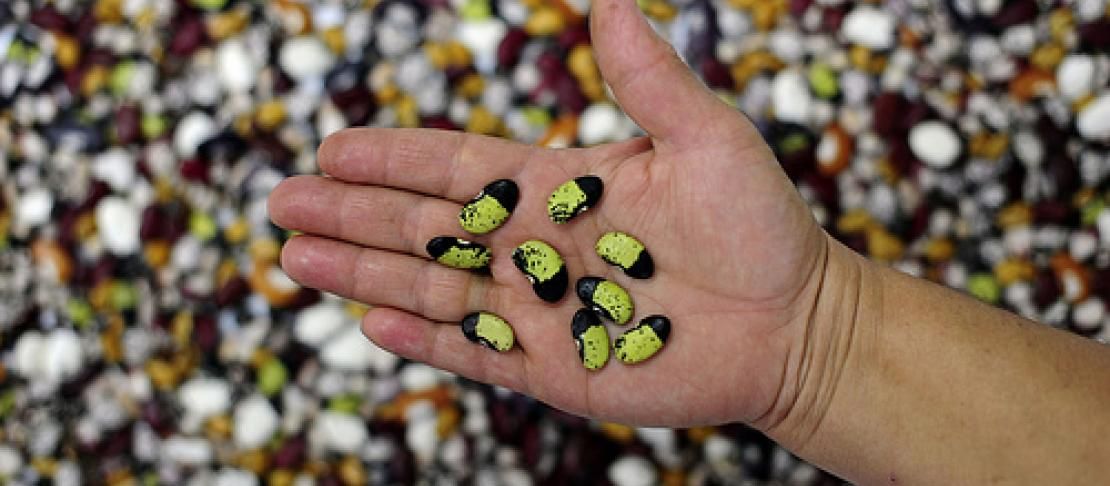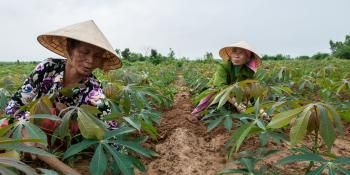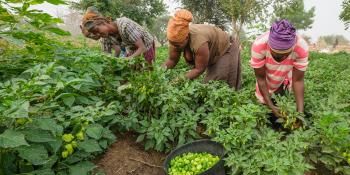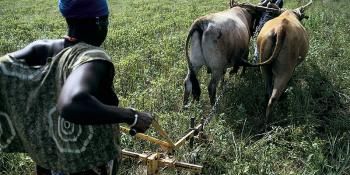Climate Change at the Commission on Genetic Resources for Food and Agriculture

Delegates to the 13th meeting of the Commission on Genetic Resources for Food and Agriculture (CGRFA), which opens formally at FAO in Rome on Monday 18 July, attended a Special Information Seminar on Climate change and genetic resources for food and agriculture: state of knowledge, risks and opportunities on Saturday.
Among the speakers was Andy Jarvis, CCAFS Theme Leader, who took the opportunity to tell the Commission that the exchange of genetic resources, one of the CGRFA's key concerns, will be an essential aspect of the adaptation of agriculture to climate change. Jarvis explained the idea of "future climates," that conditions predicted for, say, Zimbabwe in 2050 were very like conditions today in Democratic Republic Congo. So varieties and agricultural practices that do well in DRC now probably have something to offer Zimbabwe down the line.
"Overall," Jarvis said, "most countries -- 98% of them -- become more similar to one another. There is a 30% increase in interdependence."
This holds out the hope that countries will be able to adapt their agriculture by looking to other countries with a similar climate. It also makes a fully functioning global system of access and benefit sharing, as enshrined in the International Treaty on Plant Genetic Resources for Food and Agriculture, absolutely essential.
"It isn't just the seeds, though," Jarvis warned. "You also need the knowledge and practices to make use of them."
The safe movement of genetic resources also has to be tackled. In the past, pest and disease outbreaks have been linked to the movement of genetic resources, and so better knowledge of quarantine and safe movement will also be essential.
While Jarvis spoke about climate change and crops (see his presentation below), other experts dealt with forests and trees, livestock, invertebrates, the aquatic environment and microbes. As each spoke it became clear that although there was a great deal of overlap in the kinds of concerns that climate change raised in each realm, there were also considerable gaps in knowledge. Several delegates said in effect that the lack of access to good information was almost as much of a hindrance to their countries' efforts to adapt their agriculture as the lack of funds.
Climate change and plant genetic resources for food and agriculture - FAO July 2011
View more presentations from Decision and Policy Analysis Program
FAO has its climate-smart agriculture, and climate change is a key consideration in discussions of food security at the highest levels. By contrast climate change instruments, such as the Cancun Agreement, take no notice of agriculture and progress towards change is slow.
Toby Hodgkin, Honorary Fellow at Bioversity International and moderator of the Special Information Seminar, said in his concluding remarks that in addition to informing Commission members and hearing their concerns, one reason for holding the Seminar was the hope that it would help climate change negotiators to embed agriculture in their deliberations.
Agriculture is a source of greenhouse gas emissions and is blamed for deforestation, but it also has to be part of the solution to climate change.
Read more...
Background Paper: Climate Change and its Effect on Conservation and Use of Plant Genetic Resources for Food and Agriculture and Associated Biodiversity for Food Security (PDF)
More Commission background papers
All the presentations from this session are available from the Commission's website.
Blog post and video contributed by j [dot] cherfas [at] cgiar [dot] org (Jeremy Cherfas), Bioversity International.


